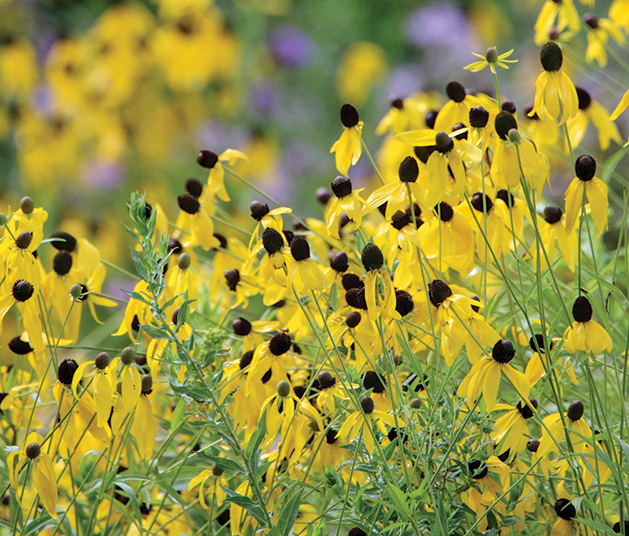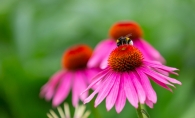
In the language of flowers, black-eyed Susan symbolizes justice.
And they deserve a bit of justice on their own. As a member of the eye-catching daisy family they’ve got stiff competition in the garden from zinnias, dahlias and chrysanthemums. The one standout feature black-eyed Susans possess is their knock-out visual effect when grown in numbers.
While they are also in the same family as dandelions (along with lettuce and artichokes, strangely enough), unlike that invasive bane of lawns across the nation, black-eyed Susans (Rudbeckia hirta) are natives in North America where they blanketed the prairies and open woodlands. What a sight that must have been!
Their bright color and velvety foliage grow as annuals or short-lived perennials and they are resistant to insects and disease. While parts of the plant have nutritional value and were used medicinally by Native Americans, other parts are inedible and especially toxic to cats.
Grow Your Own Black-eyed Susan
Plant: 12–18 inches apart in moist, well-drained soil and full sun. They will do well in average and even poor soils, tolerating dry soil conditions and will fill in the space between plants. No need to water or fertilize but a little extra care will be rewarded with more blooms.
Days to Germinate: 10–15, plant shallow. Seeds need light to germinate.
Grows: 2–3 feet tall on long stems, summer through fall. Keep plants well weeded when young. Established, they will grow in thick clumps and usually not need weeding.
Propagation: by seed or division. Dig up, separate into clumps, replant clumps. Seeds can be dried on the stem for reseeding in other areas.
Tips: Deadheading spent blooms will prolong the blooming period.
Start plants indoors, six–eight weeks before the last frost date (May 29 in Maple Grove). If started early in the spring, blooms may appear in the first year.









